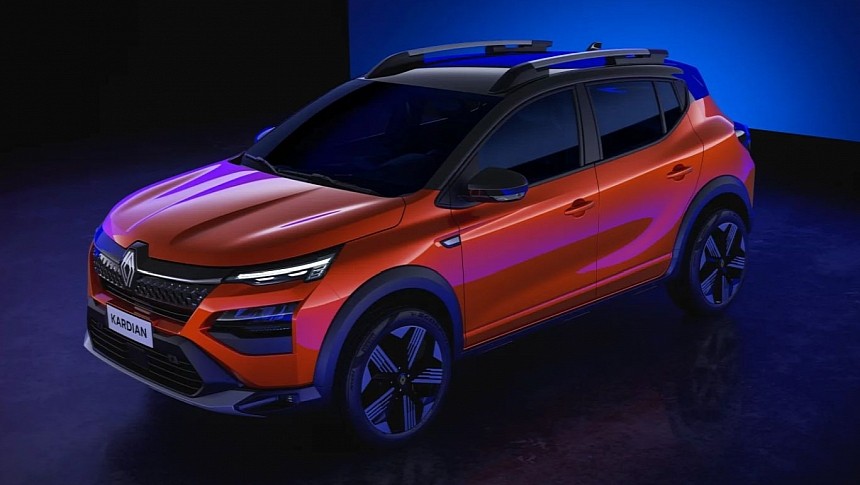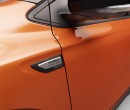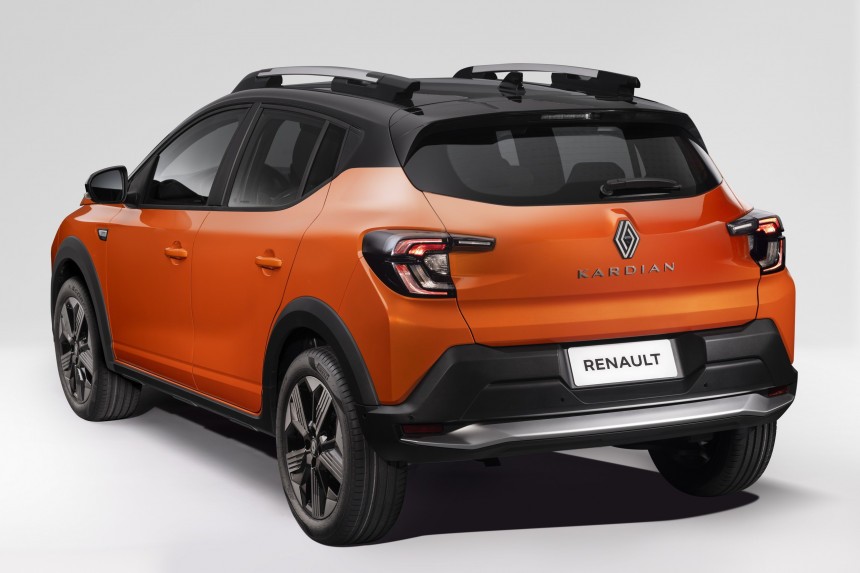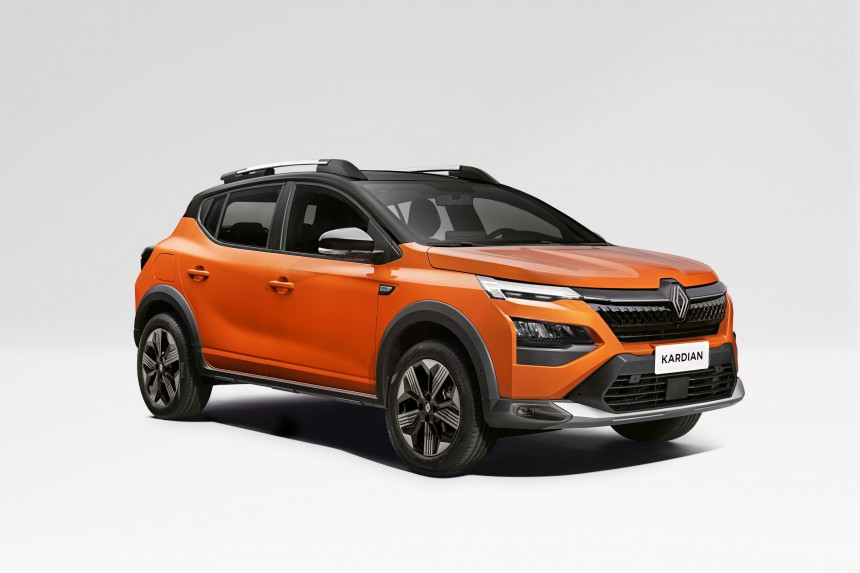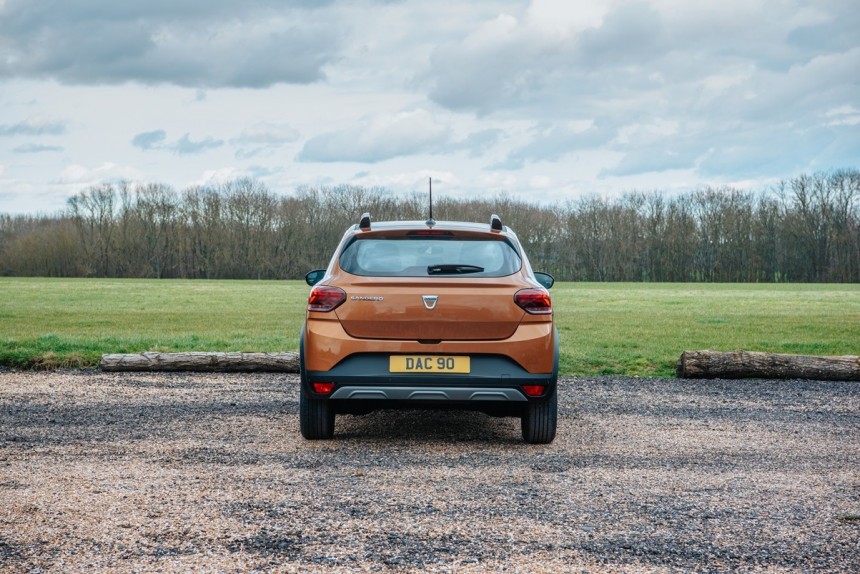Not that long ago, anyone willing to buy a car could go to automakers' websites and have a look at the technical specifications of anything that they considered enticing. Apart from a few honorable exceptions, that is no longer possible. The only explanation I find is that customers do not care about that anymore. That would explain why the concept of SUVs is now so flexible. Nowadays, what defines an SUV? Check the Renault Kardian.
The French automaker says it is "a compact, modern, and tech-focused SUV" in its international communications about the vehicle. It would not be such a surprise if it were only in the Portuguese text for the Brazilian market because Renault has done that before in that market. When it presented the Kwid there in August 2018, it said it was an SUV because it complied with the definitions set by a Brazilian institute called Inmetro.
This local government body establishes several standards for quality and safety purposes. It also plays a similar role to that the Environmental Protection Agency (EPA) has in the US regarding fuel consumption. In other words, it certifies which are the most fuel-efficient cars for sale in Brazil.
In its attempt to allow a fair comparison among them, Inmetro created several categories, including the compact sport utility vehicle (veículo utilitário esportivo compacto) classification – which is not what it seems. These cars have to present at least four of these five requirements: a minimum approach angle of 23º, a minimum departure angle of 20º, a minimum break-over angle of 10º, and ground clearance of 200 millimeters (7.9 inches) between the axles or 180 mm (7.1 in) under the front and rear axles. There's no word about four-wheel or all-wheel drive.
That reference only appears in the compact off-road automobiles (veículo fora-de-estrada compacto) category, which demands the cars to be four-wheel drive and present slightly more demanding off-road angles. There you have it: according to Inmetro, SUVs are two-wheel drive vehicles. The same rule applies to larger vehicles. Curiously, even the off-road angles are equal. For the Brazilian institute, four-wheel or all-wheel drive vehicles are off-roaders.
That is something automotive journalists have widely criticized, but it made no difference. After all, what makes a vehicle an SUV is the capacity to do what off-roaders do. The only difference is that they are more luxurious. Most countries adopt the English word "crossover" to define taller vehicles that look like an SUV but are far from it. Inmetro ignored that and said crossovers are actually SUVs.
I comprehend that any Brazilian government branch would be contrary to using a foreign term to frame compact crossovers. This is what must have led Inmetro to define it as a "utilitário esportivo." The Brazilian automotive press already had an alternative term in place: "aventureiro" (adventurer). Curiously, it is based on the first crossover built and sold in that country, the Palio Weekend Adventure – another English word. Inmetro must have thought it was not adequate. "Aventureiro" can also be translated as vagrant or tramp.
Little did the Brazilian institute know that it would reinforce – or even cause – global confusion. It may be okay for Renault to call the Kardian an SUV in Brazil, but that would be considered wrong in places like Europe or the US, where "crossover" would be a more appropriate definition for it.
I have to say that the work Renault's designers made to pretend the Kardian is not a Dacia Sandero Stepway was very convincing. However – and apart from the different badge, plastic parts, and a few steel panels – that's what that vehicle is. Some may even be embarrassed to call it a crossover when it is a hatchback with higher ground clearance and more robust suspension. The C-pillars are still identical, as well as the general proportions. Would anyone in Europe call the Sandero Stepway an SUV or even a crossover? I strongly doubt it.
Wikipedia also addresses how flexible the SUV definition has become – to say the least. Yet, it also sticks to the idea that an SUV has to be a four-wheel or all-wheel drive car – which are different things, mind you. With the Kardian, Renault tried to expand Brazil's loose usage of the term to more markets. Considering how many articles and journalists bought that, you can say it accomplished its mission.
There are other examples of vehicles that would never make the cut as SUVs but are still named as such by their manufacturers. The Volkswagen Group has a multitude of them, such as the VW Taigo, VW T-Cross, Seat Arona, and Skoda Kamiq, which do not offer four-wheel drive options and are still called SUVs. The Tiguan and its siblings from other mothers should only be considered SUVs in their AWD derivatives. Hyundai also presented the Casper as an urban SUV, which are terms that definitely do not fit together, as my colleague Razvan Calin stressed a while ago.
My theory is that this only happens because customers are more worried about the looks than about substance. They may even be as willing as the companies selling crossovers or tall hatchbacks as SUVs to call them such. Market analysts still refer to SUVs as what people want to purchase when crossovers or things that look like SUVs are more than enough to attract attention. It may also be the case that most don't even know the difference. As Luigi Pirandello once wrote, "so it is (if you think so)."
The risk with making the acronym lose its more technical definition is that anything will soon be an SUV, regardless of fitting the original meaning it had. That will force automakers to create a new classification for vehicles that actually offer something more than the looks or a bit more ground clearance. We may end up calling them off-roaders, just like Inmetro decided automakers in Brazil should classify their four-wheel or all-wheel drive cars. Those who remember why the Land Rover Range Rover helped coin the expression sport utility vehicle will see that as a regression, which may match the idea that time is just the same old story repeated in cycles. That would explain so much, wouldn't it?
This local government body establishes several standards for quality and safety purposes. It also plays a similar role to that the Environmental Protection Agency (EPA) has in the US regarding fuel consumption. In other words, it certifies which are the most fuel-efficient cars for sale in Brazil.
In its attempt to allow a fair comparison among them, Inmetro created several categories, including the compact sport utility vehicle (veículo utilitário esportivo compacto) classification – which is not what it seems. These cars have to present at least four of these five requirements: a minimum approach angle of 23º, a minimum departure angle of 20º, a minimum break-over angle of 10º, and ground clearance of 200 millimeters (7.9 inches) between the axles or 180 mm (7.1 in) under the front and rear axles. There's no word about four-wheel or all-wheel drive.
That is something automotive journalists have widely criticized, but it made no difference. After all, what makes a vehicle an SUV is the capacity to do what off-roaders do. The only difference is that they are more luxurious. Most countries adopt the English word "crossover" to define taller vehicles that look like an SUV but are far from it. Inmetro ignored that and said crossovers are actually SUVs.
I comprehend that any Brazilian government branch would be contrary to using a foreign term to frame compact crossovers. This is what must have led Inmetro to define it as a "utilitário esportivo." The Brazilian automotive press already had an alternative term in place: "aventureiro" (adventurer). Curiously, it is based on the first crossover built and sold in that country, the Palio Weekend Adventure – another English word. Inmetro must have thought it was not adequate. "Aventureiro" can also be translated as vagrant or tramp.
I have to say that the work Renault's designers made to pretend the Kardian is not a Dacia Sandero Stepway was very convincing. However – and apart from the different badge, plastic parts, and a few steel panels – that's what that vehicle is. Some may even be embarrassed to call it a crossover when it is a hatchback with higher ground clearance and more robust suspension. The C-pillars are still identical, as well as the general proportions. Would anyone in Europe call the Sandero Stepway an SUV or even a crossover? I strongly doubt it.
Wikipedia also addresses how flexible the SUV definition has become – to say the least. Yet, it also sticks to the idea that an SUV has to be a four-wheel or all-wheel drive car – which are different things, mind you. With the Kardian, Renault tried to expand Brazil's loose usage of the term to more markets. Considering how many articles and journalists bought that, you can say it accomplished its mission.
My theory is that this only happens because customers are more worried about the looks than about substance. They may even be as willing as the companies selling crossovers or tall hatchbacks as SUVs to call them such. Market analysts still refer to SUVs as what people want to purchase when crossovers or things that look like SUVs are more than enough to attract attention. It may also be the case that most don't even know the difference. As Luigi Pirandello once wrote, "so it is (if you think so)."
The risk with making the acronym lose its more technical definition is that anything will soon be an SUV, regardless of fitting the original meaning it had. That will force automakers to create a new classification for vehicles that actually offer something more than the looks or a bit more ground clearance. We may end up calling them off-roaders, just like Inmetro decided automakers in Brazil should classify their four-wheel or all-wheel drive cars. Those who remember why the Land Rover Range Rover helped coin the expression sport utility vehicle will see that as a regression, which may match the idea that time is just the same old story repeated in cycles. That would explain so much, wouldn't it?
